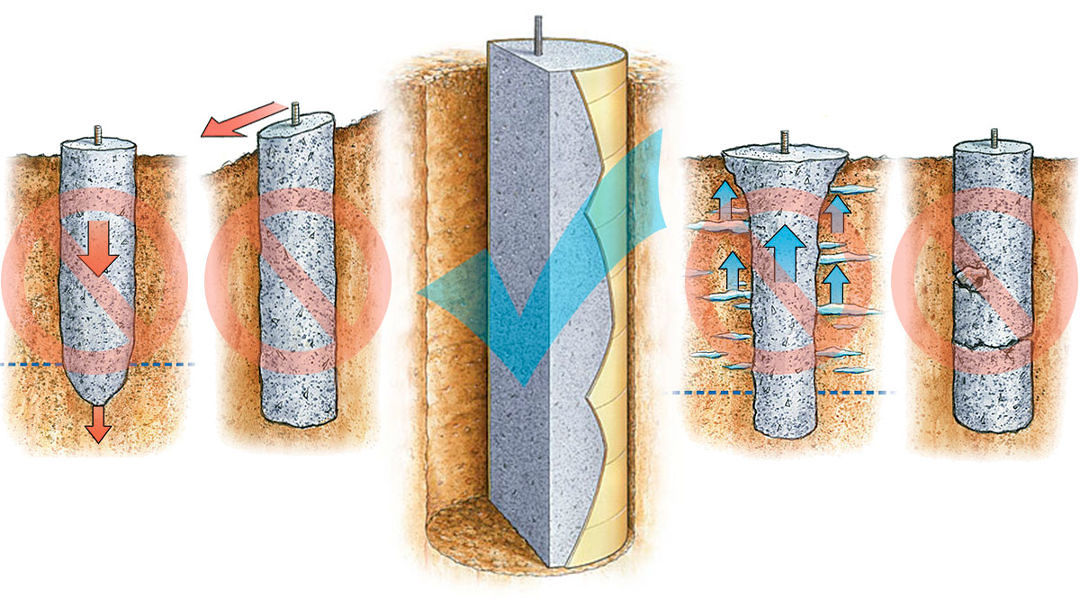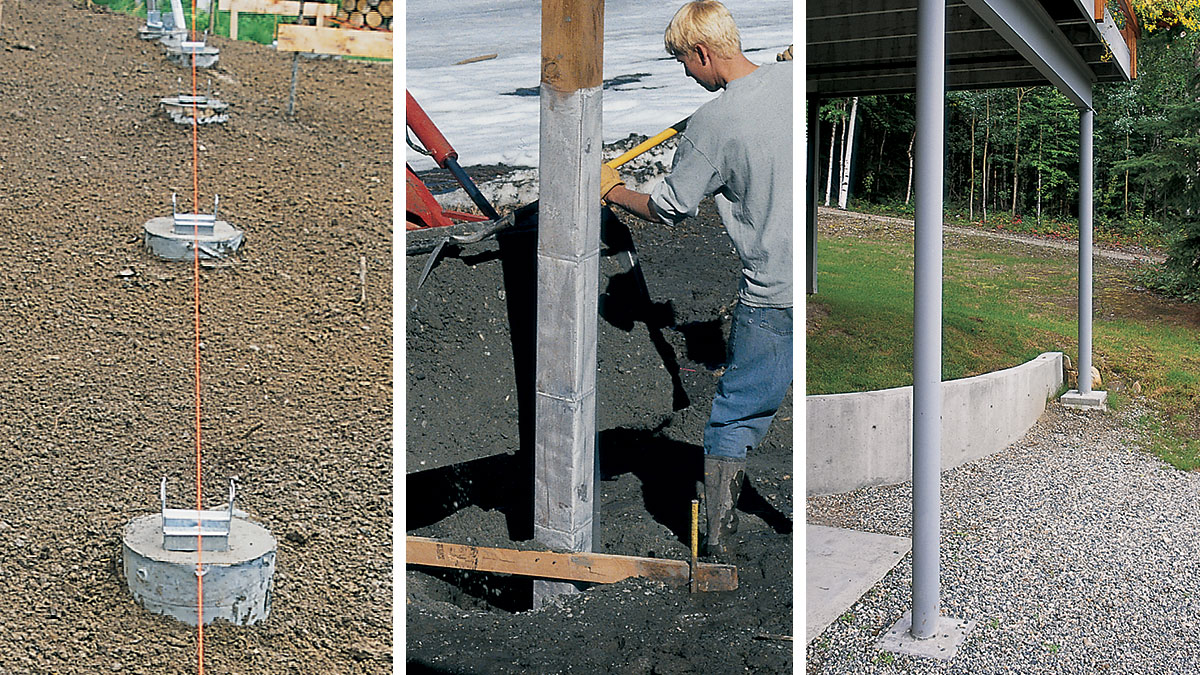A Comprehensive Guide to Deck Footings: Expert Tips for Solid Structures
Wiki Article
Crucial Tips for Solid Deck Ground: A Comprehensive Overview
Welcome to "Necessary Tips for Solid Deck Ground: A Comprehensive Overview." In this comprehensive guide, we will certainly offer you with the important understanding and strategies to make certain a solid and stable foundation for your deck. Constructing a deck is a financial investment that calls for cautious planning and focus to information, especially when it involves the ground. This guide will certainly cover critical elements such as selecting the right products, evaluating soil problems, determining load ability, establishing appropriate footing deepness, and achieving specific setup. By following these pointers, you will be outfitted with the needed information to construct a deck that not only boosts your outside room however likewise stands the examination of time. Let's dive right into the world of strong deck footing and develop a structure you can depend on.Picking the Right Deck Footing Products
When choosing the best deck footing products, it is important to think about the certain demands and requirements of your job. The top quality and sturdiness of the grounds straight influence the stability and longevity of the deck structure. There are a number of aspects to take into consideration when choosing deck ground products.One essential consideration is the sort of dirt in your location. Various dirt kinds have differing load-bearing abilities and water drainage homes. As an example, clay dirts have a tendency to maintain water, while sandy soils drain rapidly. Understanding your soil conditions will certainly aid you pick grounds that can successfully support the weight of the deck and avoid issues such as sinking or heaving.
An additional aspect to consider is the climate in your region. Severe temperature levels, moisture degrees, and freeze-thaw cycles can impact the performance of deck grounds. In chilly climates, for example, frost heave can cause grounds to fracture or move. In such cases, making use of frost-resistant materials or mounting footings below the frost line can help mitigate these threats.
Furthermore, the dimension and style of your deck should likewise affect your option of footing products. Larger or even more complex decks may need much deeper or strengthened grounds to guarantee ample support. Recognizing the details load demands of your deck will certainly assist you establish the suitable products to make use of.
Ultimately, selecting the best deck ground products involves cautious factor to consider of elements such as dirt problems, environment, and deck design. By taking these elements right into account, you can pick footings that offer the essential assistance, enhance the stability of your deck, and guarantee its long life.
Correctly Analyzing Dirt Conditions
To correctly examine dirt problems for your deck footing, it is important to extensively assess the load-bearing capabilities and drainage properties of the soil in your area. Comprehending the soil's capability to birth weight and its capacity to drain pipes excess water will certainly aid ensure the stability and longevity of your deck.When evaluating the load-bearing capacity of the soil, it is very important to think about aspects such as soil density, kind, and compaction. Different soil kinds have differing load-bearing abilities, with compacted soils typically providing much better assistance than sandy or loose dirts. Performing a soil test can supply important details about the soil's capacity to support the weight of your deck.
Furthermore, reviewing the drainage properties of the soil is important to avoid water buildup and possible damages to your deck - Deck Footings. Poor water drainage can bring about moisture buildup, which can damage the structure and create structural problems. It is necessary to assess the dirt's capability to drain pipes water efficiently to avoid these issues
Consulting with a specialist designer or soil specialist can greatly assist in correctly examining dirt conditions for your deck ground. They can provide skilled suggestions and advice, making sure that you pick the appropriate ground layout and materials based upon the specific features of the dirt in your location. Taking the time to thoroughly assess dirt problems will certainly help you construct a strong and sturdy deck.
Calculating Lots Ability for Grounds
One critical action in making sure the security of your deck is to properly compute the load ability for your footings. Deck Footings. The load ability refers to check out here the maximum amount of weight or tons that the grounds can safely support without causing any kind of structural damage or failing. Calculating the tons capability for footings includes considering numerous aspects such as the size and sort of footings, the sort of dirt, the measurements and weight of the deck, and the real-time tons and dead load that the deck will undergoTo compute the tons capability, it is very important to get in touch with neighborhood building regulations and laws as they offer certain standards and needs for deck building and construction. These codes consider aspects such as soil bearing capacity, frost depth, and minimal footing dimensions. Additionally, it is critical to involve the services of an expert service provider or a structural engineer who can do the needed computations and assessments to make sure the security and security of the deck.
When calculating the lots capacity, it is crucial to accurately determine the real-time tons and dead tons that the deck will experience. The live lots describes the weight of individuals, furnishings, and any kind of other items that will certainly be placed on the deck, while the dead lots describes the weight of the deck itself. By accurately figuring out these loads and taking into consideration all appropriate factors, you can ensure that your grounds are appropriately made to sustain the weight and maintain the stability of your deck.
Making Sure Correct Footing Depth
Correct ground depth he has a good point is vital for ensuring the stability and durability of your deck. The depth at which the grounds are mounted straight impacts the architectural honesty of the deck, as it figures out exactly how well the grounds can resist the forces exerted by the deck and the dirt underneath it.When determining the appropriate ground deepness, numerous elements have to be taken into consideration. These include the kind of soil, the local climate, and the tons capacity needed for the deck. Generally, grounds need to be put listed below the frost line to protect against any type of heaving or changing because of freezing and thawing cycles. In areas with expansive clay dirt, much deeper footings might be required to supply sufficient assistance.
To determine the appropriate footing deepness, it is advised to seek advice from with a structural designer or structure assessor who can examine the specific problems of your site and give guidance based upon neighborhood building codes and policies. They will certainly think about factors such as soil structure, aquifer level, and expected lots to establish the minimum necessary footing depth.
Mounting Footings With Accuracy
Setting up footings with accuracy is essential for making sure the stability and structural honesty of your deck. Correctly mounted grounds provide a strong foundation, ensuring that your deck can hold up against the weight of furniture, people, and various other tons. To install grounds with accuracy, there are several crucial actions to adhere to.To start with, it is very important to precisely mark the area of each ground. This can be done by using a string or chalk line to develop a clear overview. By measuring and marking the exact placements, you can guarantee that the grounds are equally spaced and aligned.
Following, you require to dig the openings for the grounds. It is critical to dig them to the correct deepness and size, as defined by regional building regulations and policies. This will certainly give appropriate support and prevent the deck from moving or sinking in time.
As soon as the holes are dug, it is vital to level and portable the dirt at the end of each hole. This will produce a stable base for the ground to rest on and avoid any kind of settling or motion.
After preparing the openings, you can proceed with putting the concrete. Utilize a concrete mix that is appropriate for footings and comply with the maker's guidelines for blending and pouring. Guarantee that the concrete fills up the openings completely and is level with the ground surface.
Finally, permit the concrete to heal correctly before continuing with the building of your deck. This will certainly guarantee that the footings are stable and solid, giving a protected foundation for your deck.

Conclusion
To conclude, making certain solid deck footing is important for the stability and durability of a deck framework. By selecting the proper ground materials, examining soil problems, determining tons ability, and installing footings with precision, the risk of architectural failure can be lessened. Following these vital pointers will help develop a strong structure for any kind of deck project.Recognizing your dirt conditions will aid you choose footings that can successfully sustain the weight of the deck and prevent issues such as sinking or heaving.
Consulting with an expert engineer or dirt expert can significantly aid in appropriately analyzing dirt conditions for your deck ground. Calculating the tons ability for grounds involves considering numerous elements such as the dimension and type of grounds, the type of soil, the dimensions and weight of the deck, and the live load and dead load that the deck will be subjected to.

Report this wiki page